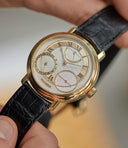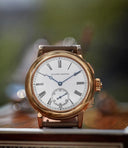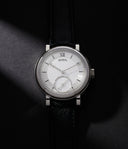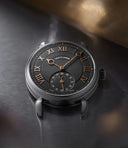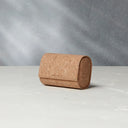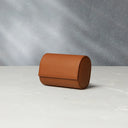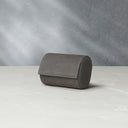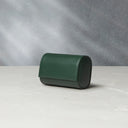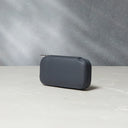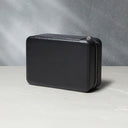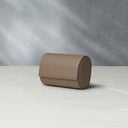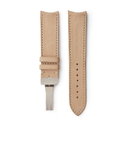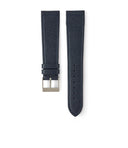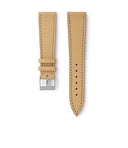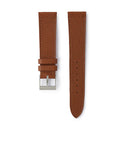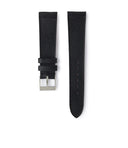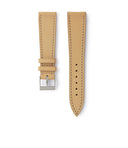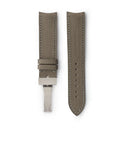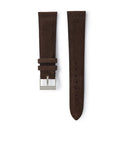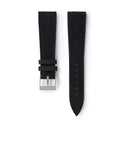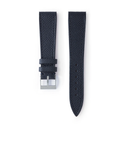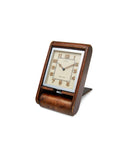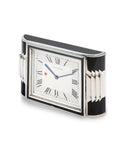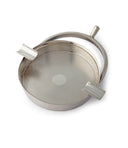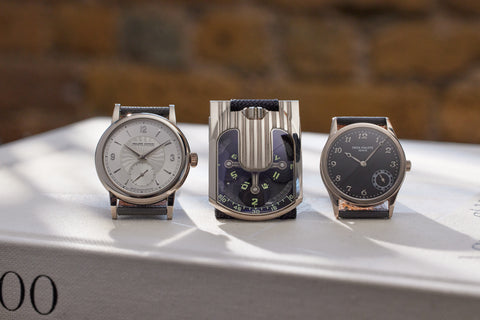Founded in 2001 in Dresden, Saxony, the independent house of Lang & Heyne was helmed by Marco Lang, after Mirko Heyne left the following year to work at Nomos in nearby Glashütte. Lang, a fifth-generation watchmaker, who had got his start in precision mechanics, built the brand around the baroque spirit of Dresden, imbuing the technical finesse of the masters whose historic clocks and watches he had watched his father restore for the Dresden Art Chamber. He too would earn his stripes in restoration before crafting watches under his own name. Lang & Heyne exhibited its first watches, the Friedrich August and the Johann, when the brand exhibited with the Academy of Independent Watchmakers (AHCI) at Baselworld in 2002. It continued the tradition of naming its watches after nobility and those who made meaningful contributions to Saxon society even after Lang left the brand in 2019.
This example of the Georg represents the ideal of the brand, enriched with details such as the recognisable three-lug case, crafted in stainless steel. The rectangular form of the case brings to mind gentleman’s watches from the early part of the 20th century, the heyday of the Art Deco aesthetic. This is expressed in details such as the cut-out corners and the stepped and rounded form of the bezel. The streamline detail on the midcase is yet another place where this inspiration is evident. The case is 40mm long, 32mm wide and stands 11.5mm tall. The substantial onion crown is of the sort typical to Glashütte makers. Safeguarding it are a pair of fin-shaped crown protectors.
The three lugs, adding structure to the strap, are straight and substantial. In between the top lugs are the brand mark and the word “steel”. The 20mm wide black, alligator-grained leather straps are attached by screwed bars. The straps are secured by a signed pin buckle, also crafted from stainless-steel.
The dial is thoughtfully arranged to alleviate some of the difficulty with precise time-reading in a rectangular watch. The Georg’s time-telling element is laid out along a square shape – the equal scale of all sides of the display makes this arrangement significantly more readable. Crafted from glowing white enamel, the dial features a printed black chemin de fer track of minutes, with blue diamond indices at quarter hours. The Arabic chapter of hours has an Art Deco serif flourish to it. This chapter is interrupted by a sunken subsidiary seconds register. This has a sector-style layout with a quarter of printed Art Deco Arabic seconds indicators. The brand mark is just below 12 o’clock, underneath it is a detail seldom seen – the serial number is noted on the dial. At 6 o’clock is printed ‘Made in Saxony’. The blue of the quarter hour diamond indices is repeated in the shade of the heat-hued hands. The hours and minutes hands are cathedral-style, while the seconds indicator is a simple pointer with a cathedral-style counterweight.
Through the display caseback, secured by 10 screws, is visible the manually wound calibre VIII. It features a single barrel from which the movement derives 55 hours of autonomy. The movement hacks for precise time-setting. Set against a frosted gold baseplate, the calibre is laid out so every element and wheel is anchored by its own stainless-steel bridge. The bridges are sculptural, with frosted bases and rounded arms that have been black polished. The crown and mainspring wheels have been solarised while the wheels of the going train are golden. The large balance wheel is anchored by two bridges and revolves on an axis crowned with a brilliant cut diamond set in a fluted chaton. The large, blued screws as well as the bright shade of the working rubies offers vibrancy to the dial side appearance. The finishing is precise and done by hand. On the baseplate the serial number and the brand mark are free hand engraved.
This stainless-steel iteration of the Georg, embodies some of the finest aspects of Glashütte watchmaking, made all the more special by the inclusion of the serial number on the dial.
The watch comes as a full set that includes the outer as well as the inner box and authenticity and specification sheets.
If sold within the United Kingdom, this Lang & Heyne Georg will be subject to 20% VAT
































































































